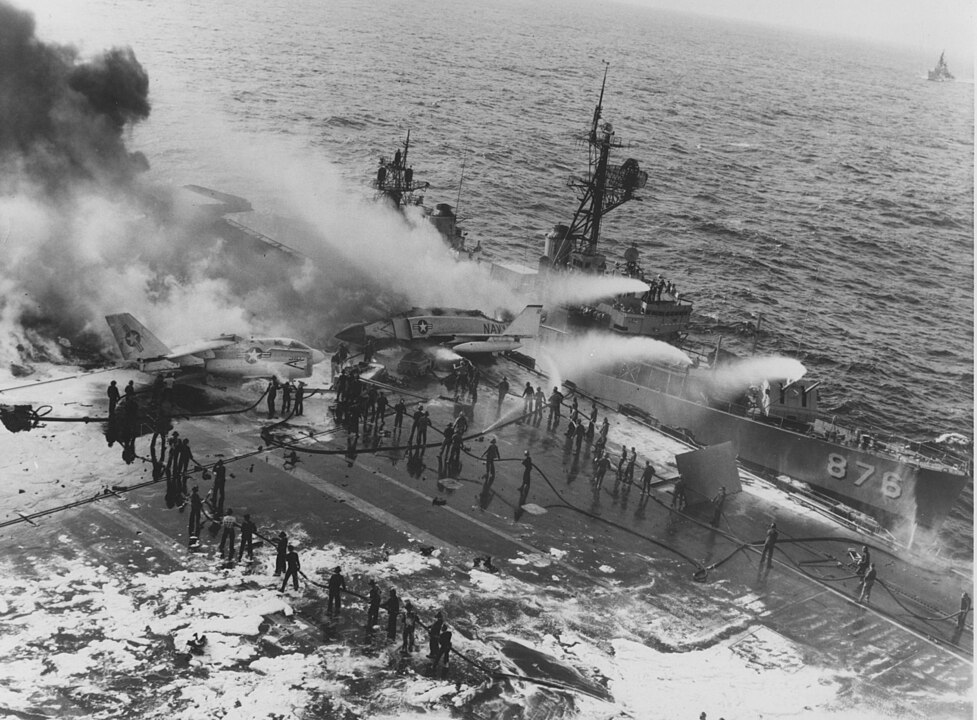
In 1985, the USS Enterprise, a renowned aircraft carrier of the United States Navy, encountered the nearly mythical maritime danger of the submerged Cortes Bank.

Located off the coast of Southern California, this underwater mountain is notorious for creating some of the planet’s largest waves. The carrier’s encounter with Cortes Bank serves as a stark reminder of the ocean’s might and the importance of naval vigilance.

The USS Enterprise was conducting an Operational Readiness Exercise out of San Diego on November 2, 1985, under the command of Captain Robert L. Leuschner Jr.

The exercise was designed to simulate airstrikes on defended targets, a complex operation.

However, in a moment of distraction, catalyzed by a false report of a gunman on board, the ship drifted dangerously close to the submerged menace of the Cortes Bank.

The impact of Cortes Bank was devastating. The USS Enterprise struck the rocky shoal, tearing a 60-foot gash into its torpedo-resistant hull.

Three of its four massive propellers were rendered inoperable, and the port keel was lost—an alarming degree of damage for any vessel, let alone a nuclear-powered aircraft carrier. The collision could have led to a catastrophic loss, but thanks to the navy’s preparedness and rapid response, disaster was averted.

The crew’s quick actions and counterflooding maneuvers stabilized the carrier, and marines stood guard against sharks while divers assessed the full extent of the damage. Naval preparedness was credited for salvaging the situation; the ship managed to stay afloat and subsequently returned to port for repairs.

This close call with Cortes Bank is not an isolated incident in naval history. The bank’s treacherous waves and submerged rocks have claimed multiple vessels over the years.

Most famously, Cortes Bank is home to what could be the world’s largest waves, as described in Chris Dixon’s “Ghost Wave: The Discovery of Cortes Bank and the Biggest Wave on Earth.”

Surfers, attracted by these legendary waves, have ventured into the dangerous waters seeking the thrill of conquering the sea’s monstrous swells.

Considering the bathymetry, a 15-ft, 20-second wave could potentially amplify to 4-5 times its initial height, resulting in a wave measuring 60-75 feet (Dixon, 2011). During significant swells, a well-formed 100-foot wave might emerge.

As for whether a surfer could ride a wave that size, it’s still uncertain. It might be too fast and too big for someone to actually ride.

Surfers have faced similar doubts in the past, like with Waimea Bay before it was surfed in 1957.

The reality is, that there seems to be no limit to the courage of surfers, regardless of whether they can conquer a wave of that magnitude.
Relevant articles:
– Nuclear Nightmare: In 1985, the Carrier USS Enterprise Collided With an Island, The National Interest, Jun 9, 2021
– Cortes Bank: the Largest Wave on the Planet, Dr Abalone, Jan 26, 2016

